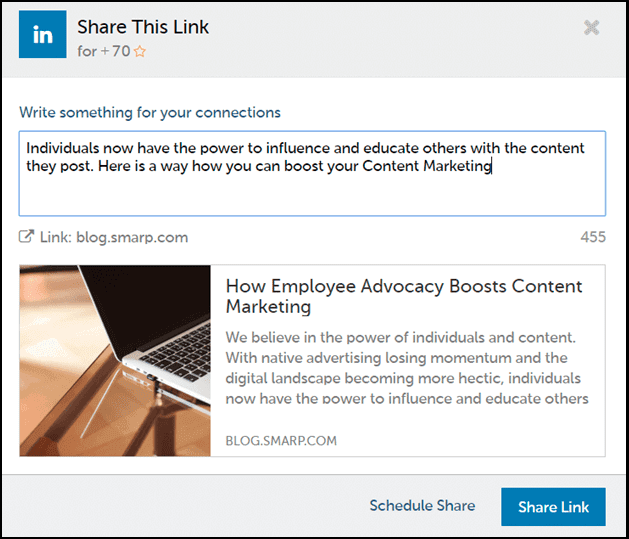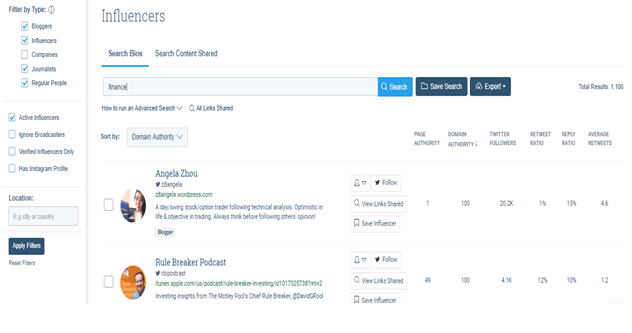Stories extremely effective at building trust. This is why businesses are using influencer marketing
Stories are a great way of appealing to and connecting with people. They’re extremely effective at building trust. Think about every time you consider customer reviews before buying a product – the stories of real people and their experiences are what truly encourages you to buy it. This is why businesses are using influencer marketing.
A study by Twitter found that tweets from influencers coupled with tweets from brands can increase purchase intent by 5.2 times. In fact, 40% of the respondents in the study reported having purchased products based directly on an influencer’s recommendation.
So, the big question is – is storytelling the future of content marketing? In this post, we’ll explore the significance of storytelling in B2B content marketing. We’ll also look at some surefire ways of boosting your B2B content strategy using storytelling.
The power of storytelling
Let’s have a quick look at the benefits of storytelling as a B2B marketing strategy.
1. Stories build trust and relationships
When you share authentic stories about your brand, you can connect with your audiences on a deeper level. Businesses have started to look beyond your brand – they look for stories that resonate with them as people. Such people are not only more likely to buy from you but also spread positive word-of-mouth about your brand.
Consider, for example, one of the leaders in CRM solutions, Salesforce. This brand realizes the importance of a good story to boost trust and credibility. It leverages its happy customers for storytelling.
Salesforce has a separate section on its website entirely dedicated to the success stories of its customers. When its prospects read such stories, it naturally instills trust in Salesforce’s solutions.
2. Stories are great motivators
A good story can be a great motivator to drive your audiences toward becoming customers. Many B2B brands have been successfully using this tactic to sell their services or products.
For example, the shipping conglomerate, Maersk, realizes how important it is to motivate its audiences. This is possible only through stories that are real and relatable. Its campaign, “The Heart of Trade” revolves entirely around the lives of people who make trade happen.
Through this campaign, it showcased the lives of the everyday entrepreneurs – the heroes of global trade. Such stories are greatly inspirational and can help to win the hearts of your prospects.
3. Stories are fun and exciting
Well of course they are! When you simply state your amazing product’s features, trust me, no one has the slightest bit of interest in them. But, turn them into a story about how they can benefit your audiences and they’ll start listening.
Law firm, BLP, offers risk management consulting services to well-known financial institutions. For one of its marketing campaigns, it created a series of videos inspired by Ocean’s 11 in a classic “heist” theme. Their objective was to be top of mind for potential buyers.
These videos spoke about caution using real-life regulatory scenarios that can become a nightmare for firms. The videos are fun to watch, engrossing and extremely compelling.
How to use storytelling effectively
Now that you understand the benefits of storytelling, let’s look at a few ways in which you can use this for B2B marketing.
1. Leverage employees as advocates to tell your stories
An interesting strategy that has been used by many B2B brands is to leverage employees to share brand stories. Your employees are the ones who know your products the best because they’re the ones who create them. So getting them to spread your story in their circles can be a great way to increase awareness of your brand.
IBM is a company that has been using this tactic successfully for a long time. It created an internal hub that makes it easy for its employees to share content on their social networks. The employees who participate in the program are recognized for their efforts. This isn’t an absolute necessity, however.
Of course, IBM is able to leverage its in-house platform given its technical proficiency and immense resources. For those of us who don’t have such resources at our disposal, platforms like Smarp can be really helpful.
Smarp is an employee advocacy platform that makes it easy for marketers to create streams of content suggestions for colleagues to share from their personal social profiles. But where Smarp differentiates itself is its usefulness as a “social intranet.” Account admins can determine whether a given post is primarily to be used for public-facing distribution or solely for in-house discussions.

Source: Smarp
This second use case can be a serious game-changer for marketers seeking to maximize the authenticity of their storytelling. By simply posting an internal-only discussion thread, you can easily spark conversations with non-marketers in your company – sales reps, customer success agents and others who intimately know the issues that your buyer personas face day in, day out and can help inform the content you work on.
Tip: Make the process easy and seamless, allowing subject matter experts to share their wisdom via web forms, audio files – whatever fits their lives best. And make sure to offer incentives for participation. This will encourage your employees to contribute and get your stories heard in their circles.
2. Involve customers in your journey
If you truly want to resonate with your audiences and infuse yourself into their lives and conversations – involve them in every step of your journey. Share stories about how you started out, what your vision is now and your plans for the future.
By involving your customers in every step of your journey, you are no longer limited to just a product or service. Through your stories, they’ll get to see the human side of your brand and this can truly help you win their trust.
Workday, for instance, uses its social media profiles mainly to give its audience an inside look at the company to show its human side.
It shares stories of its employees and showcases their team adventures, which involve hiking, serving meals to the homeless, etc.
This speaks volumes about the culture and values of the company because it was founded on the idea of putting people at the center of enterprise software.

Tip: Identify the challenges of your target audiences and help them overcome these through storytelling. Resonate with their issues as this will make your brand appear more credible and human.
3. Leverage influencers to share your stories
Influencers are expert storytellers. So collaborate with influencers in your niche and have them present your story to their followers. Make sure not to meddle too much with the actual content creation process as this can do you more harm.
Provide your influencers with ample creative freedom while making sure you’ve clearly articulated your expectations. Studies have found that 77% of influencers prefer to collaborate with brands that provide creative freedom.
Microsoft launched a unique campaign on the occasion of International Women’s Day 2017. Its objective was to increase awareness and motivate more women to work in science, technology, engineering and math (STEM) disciplines.
They partnered with various photography influencers to post a total of 30 photos across five Instagram accounts of National Geographic. These photos featured the stories of popular female adventurers and scientists. They also encouraged girls to pursue careers in STEM in the captions.
The results were phenomenal. These photos recorded a total of 3.5 million likes and reached around 91 million people.
This is a great way of positioning your brand in front of your target audiences. When they get to hear such authentic stories from influencers, they’re more likely to buy your product. The amount of engagement the above post has generated is a good indication of that.
Apart from posting sponsored content on social media, influential bloggers can also help you get your stories across to your target audiences. A great way of engaging them is to ask them to write product reviews for you on their blogs. Not only can they boost your content strategy, but also help improve your SEO as well.
BuzzSumo can help you find the right influencers for your brand. It allows you to filter the results by domain authority, relevance, retweet ratio, reply ratio and other parameters. You can even filter the results to display influencers by type – whether you need bloggers, journalists, regular people or even companies.

Tip: Collaborate with influencers to get your stories across to your target audiences in a way that’s authentic, aesthetic and relatable.
Final thoughts
The world around us continues to evolve every single day. With it, there are shifts in consumer preferences and hence the need for brands to constantly innovate. However, our basic human instincts have remained the same and always will. We are hardwired for stories. So follow the above-mentioned methods and use the power of storytelling to take your business places.
Can you think of any other ways of using storytelling effectively in B2B marketing? Let us know in the comments below.